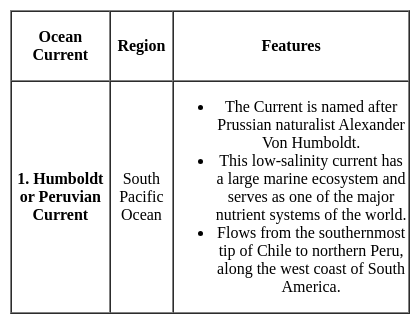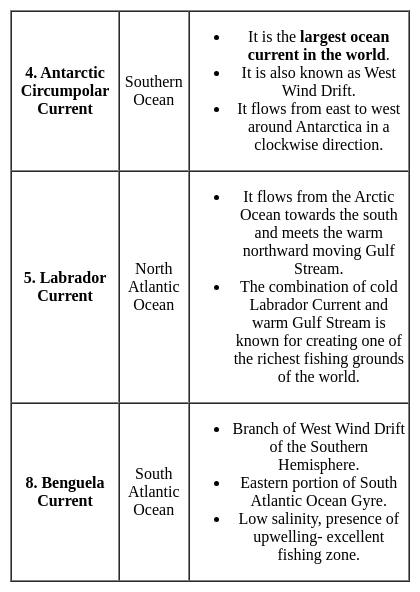MH SET Paper 2 Mock Test - 4 (Geography) - MAHA TET MCQ
30 Questions MCQ Test - MH SET Paper 2 Mock Test - 4 (Geography)
Who was the first scholar who divided the world landmass into three continents-Europe, Asia and Libya(Africa)?
Read the following statements and choose correct answer from the code given below: (a) El Nino current contributes to the global warming.
(b) El Nino is also associated with droughts in Australia.
(c) El Nino is a cold current.
(d) El Nino was discovered in the nineteenth century.
Code:
India's population growth is characterized by
Choose the correct statement from below:
Statement I:The concentration of the economy in the core city begins as a result of innovation. capital accumulation and industrial growth.
Statement II: The pre-industrial (agricultural) society, with localized economies and a small-scale settlement structure.
Which of the following is/are the ideal conditions for temperature inversion to occur?
A. Cloudy skies
B. Calm and stable air
C. Long summer days
Select the correct answer using the codes given below:
Consider the following pairs :

Which of the pairs given above is/are correctly matched?
What fundamental principle, according to the passage, remains relevant even in the face of technological progress?
What is the primary assertion of the Malthusian Theory of Population?
Which of the following statements regarding the Mediterranean and Monsoon climate is/are correct?
1. Precipitation in the Mediterranean climate is in winter while in Monsoon climate it is mostly in summer.
2. The annual range of temperature in the Mediterranean climate is higher than the Monsoon climate.
3. Rainy and dry seasons are found in both the climates.
Which one of the following scholars introduced the concept of Human Development?
Which of the following are true about the paradigm shift in Geography?
(A) It is a usual and accepted way of thinking about something that changes completely
(B) New paradigms brought adverse degradation of human efforts and morals
(C) Paradigm shift majorly focuses on the historical perspective
(D) Khun introduced the stages of development of a new paradigm
Choose the correct answer from the options given below:The earliest arrivals in India are believed to be Negritos. At which one of the following places are they mainly found now?
Which one of the following industries would be found in the traditional industrial region?
Assertion (A)- Red Sea has a salinity of 40 ppt.
Reason (R)- The salinity is greatly influenced by the difference between evaporation and precipitation as well as sea water movement.
Choose the correct option:
The word ‘ecology’ (Ökologie) was coined in 1866 by :
Process of chemical weathering is represented by-
















